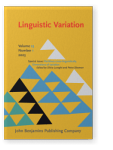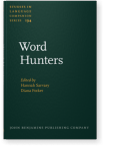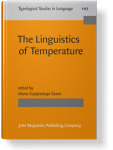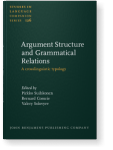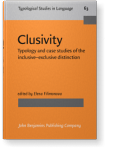Michael A. Daniel
List of John Benjamins publications for which Michael A. Daniel plays a role.
2023 The second genitive in the history of Russian and across its dialects Partitives cross-linguistically: Dimensions of variation, Luraghi, Silvia and Petra Sleeman (eds.), pp. 28–74 | Article
In this paper, we provide a survey of the diachronic development of the Russian second genitive (Gen2). As endpoints of this development, we consider data from Russian dialects representing different dialect groups. Assumedly, the expansion of Gen2 started off as ‘recycling’ of the genitive of a… read more
2018 Chapter 6. Field linguistics in Daghestan: A very personal account Word Hunters: Field linguists on fieldwork, Sarvasy, Hannah and Diana Forker (eds.), pp. 79–94 | Chapter
2015 Temperature terms in Modern Eastern Armenian The Linguistics of Temperature, Koptjevskaja-Tamm, Maria (ed.), pp. 392–439 | Article
This paper discusses the lexical expression of temperature concepts in Eastern Armenian within the general framework of the lexical typology of temperature terms. Eastern Armenian displays adjective-like tactile, noun-like ambient and verb-like personal temperature expressions. These part-of-speech… read more
2014 Against the addressee of speech – Recipient metaphor: Evidence from East Caucasian Perspectives on Semantic Roles, Luraghi, Silvia and Heiko Narrog (eds.), pp. 205–240 | Article
In Standard Average European (SAE), addressees of speech verbs are marked with dative or, in languages lacking cases, with dative-like prepositions. This merger is commonly explained through a metaphor: the information transferred in a speech act is said to be construed as the object being… read more
2012 Causatives in Agul Argument Structure and Grammatical Relations: A crosslinguistic typology, Suihkonen, Pirkko, Bernard Comrie and Valery Solovyev (eds.), pp. 55–114 | Article
The paper considers morphology, morphosyntax and semantics of causative formation in Agul, a Lezgic language of Southern Daghestan (Russia). In Agul, the two most frequent causative patterns, periphrastic and compound causatives, apparently share one source of grammaticalization. The former are… read more
2005 Understanding inclusives Clusivity: Typology and case studies of the inclusive–exclusive distinction, Filimonova, Elena (ed.), pp. 3–48 | Chapter
